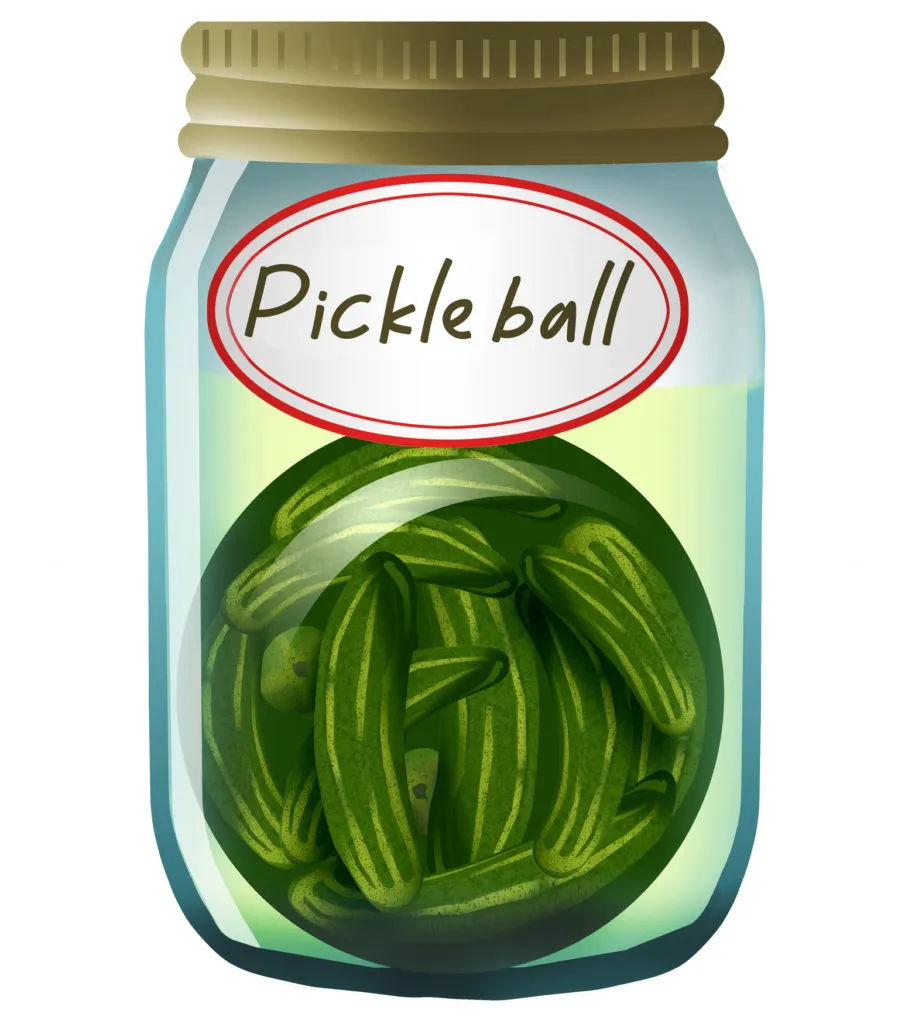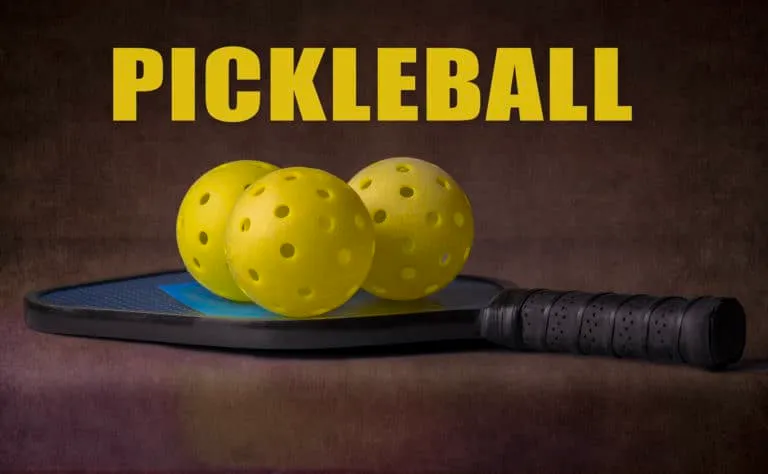Pickleball is considered one of the fastest-growing sports in the US. With the increased popularity, we see a trend of increased pickleball related injuries in the clinic. One of the most common injuries involves pickleball related knee pain. Ache knees, stiff knees, knee swelling, and knee pain are typical symptoms that can keep someone from being able to play pickleball regularly.
Have you experienced these symptoms? Many people will start playing pickleball after having played tennis.
More Pickleball Info!
How To Play Pickleball Without Hurting Yourself
Get The Lowdown On Pickleball Injuries
The Most Common Pickleball Injuries
Pickleball is typically easier on your joints compared to tennis, but that does not mean that something like knee pain won’t develop playing pickleball.
We want to help you stay on the court and avoid injuries like knee pain- so enjoy our article on how to sustain healthy and robust knees while playing pickleball.
But first of all, what is pickleball, and why is it so popular?
What is Pickleball?
Pickleball is a mixture between racquetball, ping pong, and tennis. You can find out more on the USA Pickleball website for a full understanding of North America’s fastest growing sport.
Benefits of Playing Pickleball

Creates Friendships
Pickleball is not a sport played alone; pickleball can be played in single or teamed matches. This sport gives you the opportunity to meet people, play together, and simply enjoy the sport with others.
Improves Mental Health
Exercise is a great way to improve your mental health and has been scientifically proven to do so. Physical activity has been seen to relieve body tension, increase hormones (like endorphins), and reduce stress. More about mental health benefits when exercising can be seen here.
Great Aerobic Exercise
Aerobic exercise is an important physical activity goal set by the World Health Organization. The goal is for individuals to do at least 75-150 minutes throughout the week of aerobic exercise.
Pickleball is a great way to meet the physical activity goal in just one match and even above the goal if played regularly throughout the week. Calories burned in pickleball can be anywhere between eight and eleven calories per minute.
This makes pickleball not only fun but a great way to stay active and lose weight. Aerobic exercise can be extremely important for heart health. It increases circulation, increases good cholesterol, lowers bad cholesterol, and lowers blood pressure and heart rate.
Improves Balance
Pickleball is a great way to improve your balance. Any exercise that keeps your body moving will improve balance. According to healthinaging.org, “The numbers increase significantly after age 75.
All in all, almost 40% of older adults are affected by balance problems. In adults over age 65, balance problems are linked to falls.
One-third of adults in this age group and over half of people over the age of 75 years fall each year.” It is essential to improve balance to prevent injuries from falls, and why not play pickleball to do just that?
Every sport comes with the risk of injuries. Pickleball puts a lot of stress on knees when making quick turns and stopping suddenly. We commonly see knee-related injuries for all our pickleball playing clients. We want to highlight below the most common knee injuries we see and
Four Knee Injuries Common to Pickleball
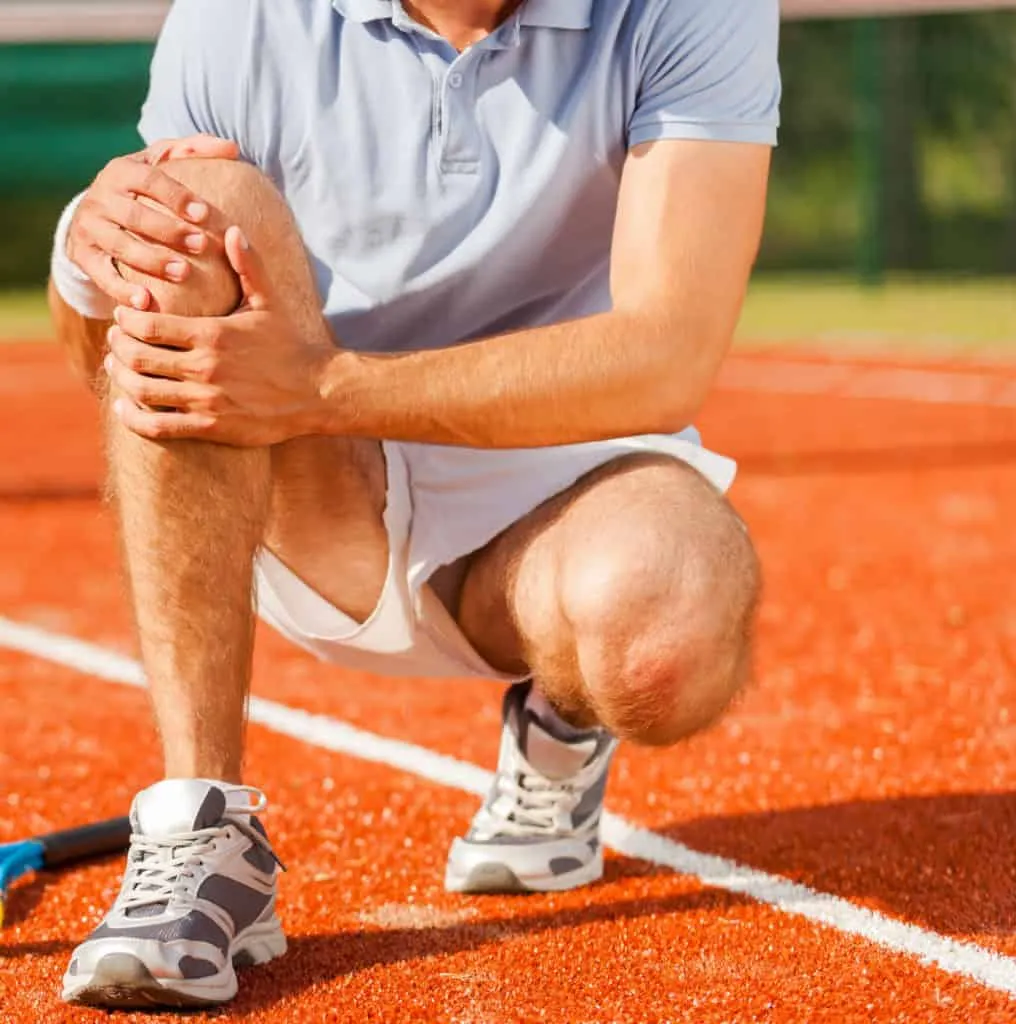
Knee Strains
Strains are defined as a damaged tendon or muscle in the knee and are often caused by overuse. Knee strains are also common when changing direction and or pivoting.
While playing pickleball, you may find yourself changing directions or mostly pivoting during swinging. When pivoting too quickly, you can put repetitive strain on your knee, causing the tendons or muscles to become damaged or overworked.
Wearing a brace with a sprained knee can offset the force to the portion of the knee that is not injured. By giving the knee extra support and allowing rest when needed, the injury should heal quicker.
In addition to wearing a brace, it is important to ensure you are properly warming up and stretching before playing. Dynamic stretching and warming up prepares the body for movement while also improving the range of motion.
Warming up lessens your risk of injury because it allows the muscles in the body to get moving without forcing the body into a sudden heavy amount of exercise. Static stretching is another great type of stretching; however, it is best to prevent muscle soreness after the game.
Muscle Strains Involving The Hamstring Or Quadriceps
A muscle strain in the hamstring or quadriceps is prevalent in pickleball. A muscle strain is an injury to a muscle to tendon. Minor muscle strains may only cause a muscle to become overstretched.
A more severe strain can cause partial or total tears of a muscle or tendon. It is common to over-lunge in pickleball to save yourself from missing the ball.
When lunging for a shot, these muscles can become overstretched, causing a strain and potential muscle damage or trauma and, in some cases, can keep you out of the game for a while.
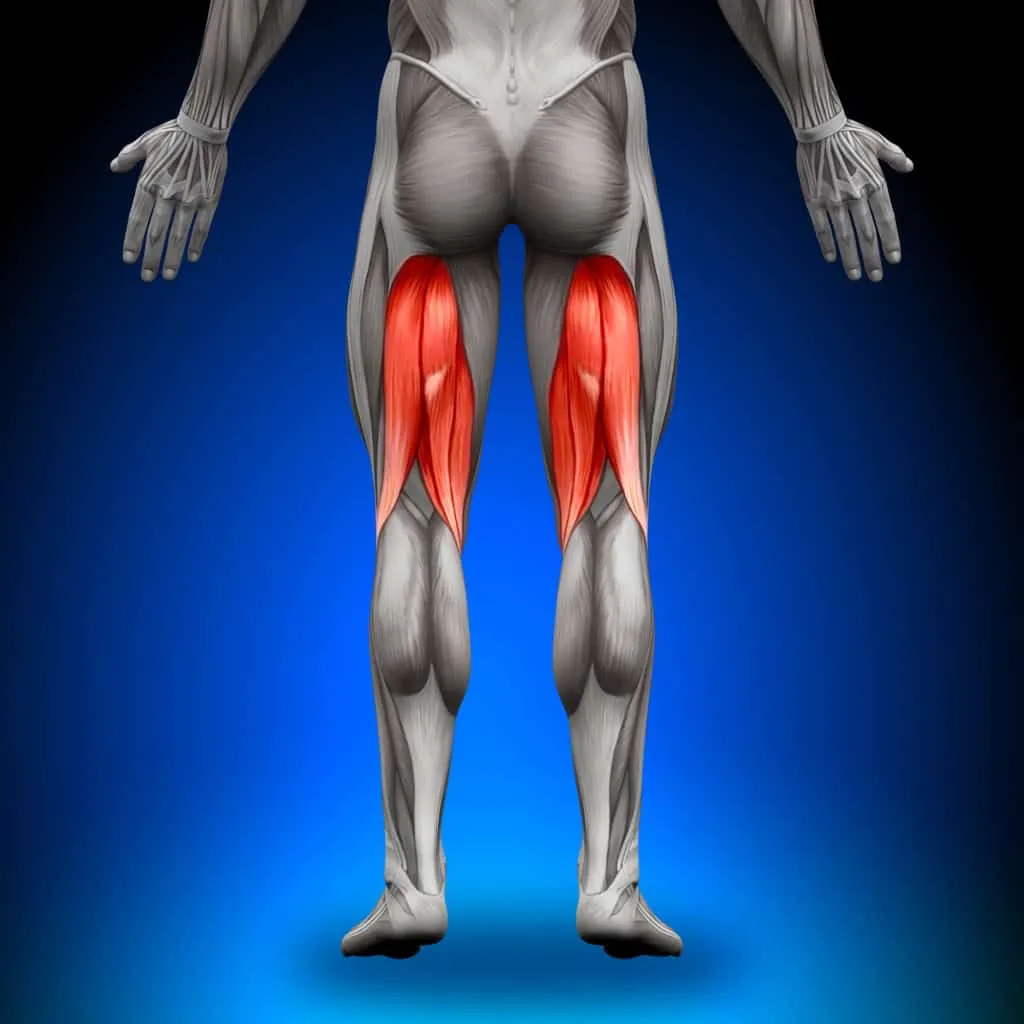
Wearing a compression sleeve can help by increasing blood flow and limiting movement in the targeted muscle or area. Just like with a knee strain, warming up and stretching is important to prevent injury and soreness.
It is important to prevent sudden sprints or changes in speed without adequately warming up because the body is not prepared for the sudden shift in rest to exercise.
Lastly, staying hydrated can prevent injury. Dehydration increases muscle fatigue leaving your body more susceptible to injury before the body should be worn out.
Patellar Tendonitis: More Commonly Known As Jumper’s Knee
Patellar tendonitis, more commonly known as jumper’s knee, is frequently seen in sports that require the quick stop and go method. You may find yourself lunging forward and then quickly coming backwards or forwards to get yourself ready for the return shot.
This type of movement creates stress specifically on the patellar tendon, which is responsible for straightening and bending the knee.
Patellar tendonitis is simply caused by overuse of the tendon when landing a jump or making quick directional changes while running. Because pickleball is so fast-paced, you may find yourself in a demanding scenario for your patellar tendon.
Patellar tendonitis can be improved with a knee strap brace. These braces relieve the pain by applying pressure to the patellar tendon without restricting movement as other braces can.
Ensuring that the leg is in proper alignment when exercising can prevent the patellar tendon from taking on unnecessary stress. You can improve leg alignment by strengthening the hip with exercises like clamshells, hip hikes, and bridging.
You want to make sure to stretch out your quads and/or strengthen the quadriceps muscle group to help prevent patellar tendonitis from developing. You should listen to your body’s cues; if you are experiencing patellar pain, it is important to rest and not further aggravate the tendon. You should avoid the stop and go method and jumping without adequately warming up. To see the top 5 exercises we recommend for patellar pain WATCH HERE.
Osteoarthritis
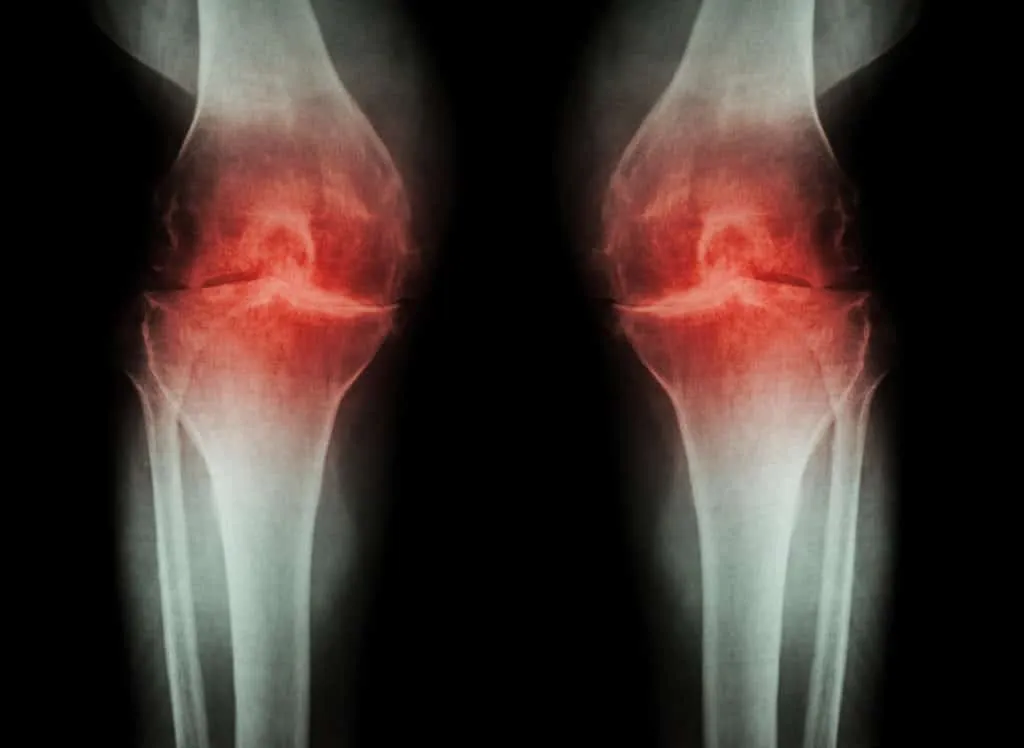
Osteoarthritis, most commonly seen in older athletes or those who have had knee surgery in the past. Pickleball isn’t an easy sport on joints due to repetitive movements on the hardcourt. Excessive exercise on already sore and inflamed joints can lead to the breakdown of cartilage in between joints causing osteoarthritis. Arthritis can be broken down into several stages, including:
- Minor: where little to no pain is felt and includes a small breakdown of the cartilage.
- Mild: The affected area may start to become sore and stiff, and an x-ray may show some minor bone spurs in the area.
- Moderate: The area will begin to lose cartilage and will be noticeably painful, leading to issues during daily activities.
- Severe: This is the most painful stage and prevents people from living their daily lives comfortably. In this stage, the cartilage is almost completely gone.
It is vital to manage the severity of osteoarthritis with x-rays, to determine the proper treatment. Treatment can include strengthening lower leg muscles like the hip and arches of the foot to assist in alignment.
For one of our favorite foot strengthening exercises, check out the “Short Foot” exercise. Strengthening these muscles will take the load off of the cartilage in between joints.
You need to ensure your knee is in optimal alignment to ensure your exercise won’t further deteriorate your health or advance knee arthritis.
Increasing flexibility also ensures that your joints are properly moving with a sufficient range of motion without causing excessive stress. Properly fitted orthotics can also help improve knee alignment and reduce strain on your knee joint.
Although injuries are common among every sport, no one stops playing them. Sports like pickleball can be played safely with proper precautions.
Tips For Avoiding Knee Injuries While Playing Pickleball
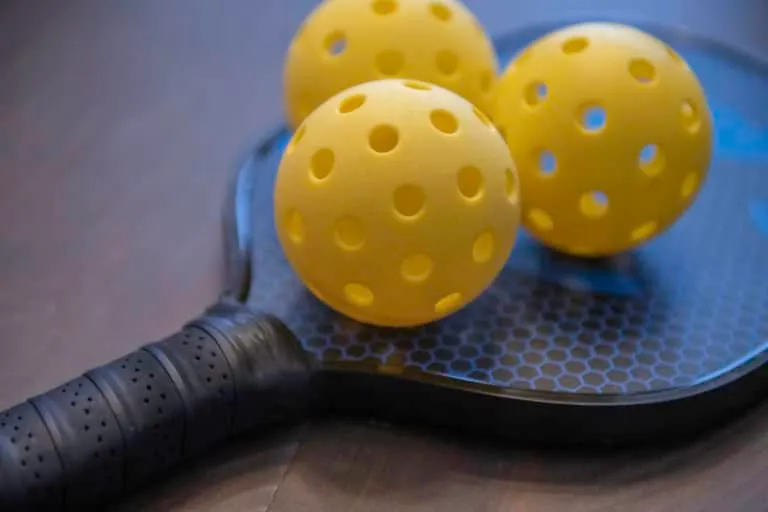
Proper warm-ups and stretches
A good warm-up should include an exercise that gets the body moving, like a slow jog or jumping jacks. After warming up, dynamic stretching is an excellent way to elongate muscles while keeping them moving. Dynamic stretches can include leg swings, plank walkouts, lunges.
Static stretching is an excellent way to relieve tension in your muscles, but it does cause the body to stop moving, which may be more helpful to save static stretching for after the game.
2. Wearing a knee brace that is specific to your need
Knee braces can provide the support needed for your specific targeted area. A knee brace offloads force on one particular area and provide the body with extra needed support with an injury. This can allow a physically active person who is injured to continue to play while protecting the area from further injury or overuse.
3. Ensuring lower leg alignment
We’ve discussed lower leg alignment, but what is it, and why is it important? Proper leg alignment should include the hips balanced over knees balanced over the feet. The knees should not cave in or out, but instead be parallel to the hips.
This alignment is important because, without proper alignment, unnecessary stress is placed on the joints and restricts the range of motion that may actually be there if the body is in the appropriate position. You can check and see if your legs are in alignment by watching in a mirror or video to see if your knees cave in when lunging, jumping, landing or running.
If you see yourself doing one of these without proper alignment, it is vital to work on leg alignment exercises to prevent an injury like one of the ones listed above.
You can improve alignment with hip and foot strengthening exercises. These exercises with proper alignment can include clamshells, hip abduction and adduction, squats, calf raises, tip toe walking, and heel walking.
Just like with posture, keeping an open mind to staying aware of alignment can also prevent alignment issues. Working every day on this stance with and without exercising is important.
4. Movement Exam from a Pickleball specialist
If you have had knee injuries or knee pain in the past and are looking to start playing pickleball, we recommend you have a full movement exam from a pickleball specialist.
A trained physical therapist who works with this population knows how to spot poor movement patterns that will increase strain on your knees or other areas.
It is always easier to fix an improper pattern when we catch it early and before it progresses to a more severe condition or pain.
Maybe you’re already dealing with knee pain that is keeping you from actively playing pickleball. If that is the case- you should also start with a movement exam.
The report generated from this movement exam will give you the precise issues contributing to your injury and a specific framework for you to start your recovery and get you back on the court!
Do you need some help, get in touch with us through our contact page. Are you interested in getting started? Then be sure to apply for your Free Discovery visit, where we can answer all your questions and help map out a recovery plan for you.
